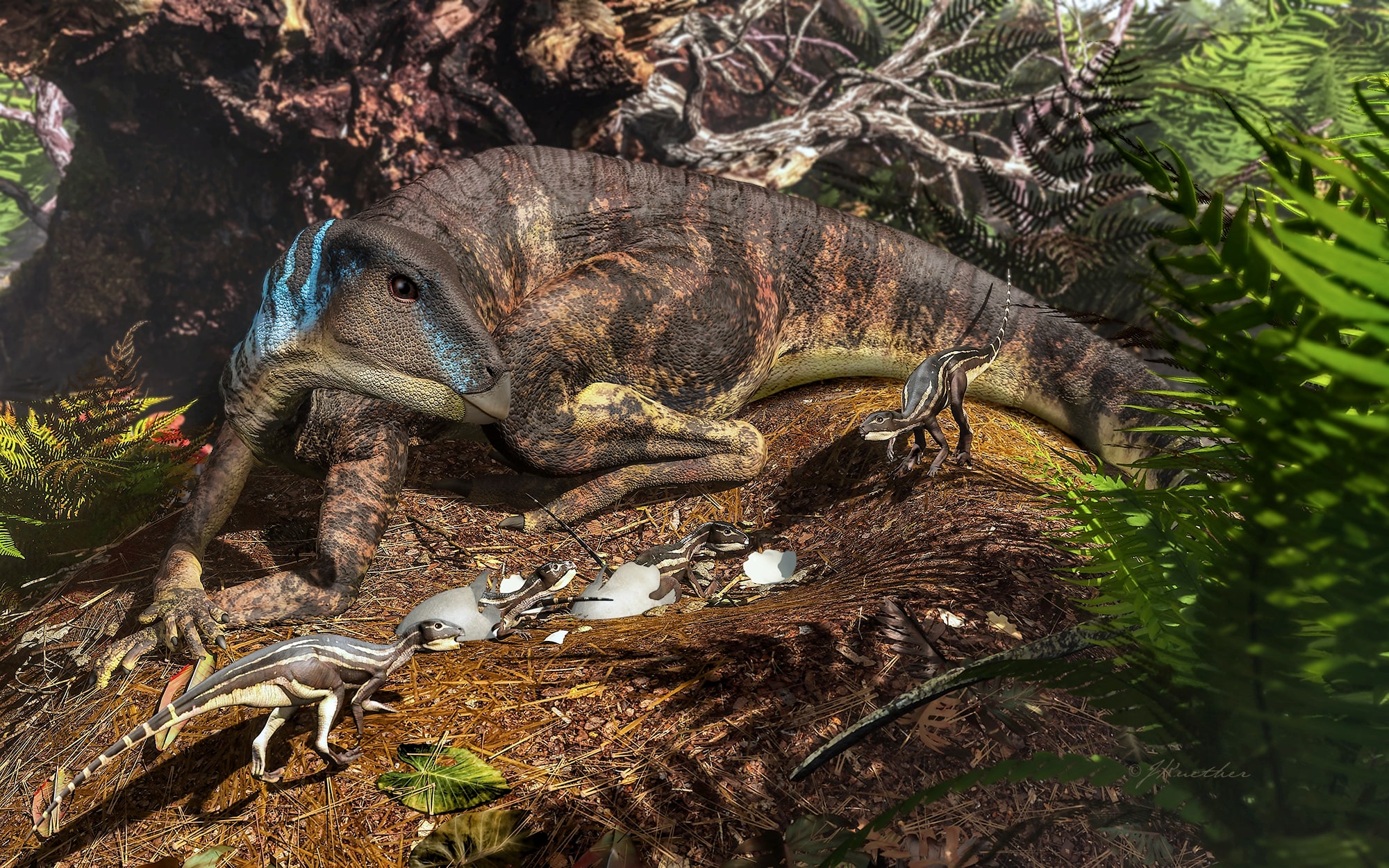In Brief
- The first baby dinosaurs from Australia have been discovered.
- The 100 million-year-old bones were found at Lightning Ridge (NSW) and the south coast of Victorian.
- The bones come from ornithopod dinosaurs — small, two legged herbivores — and weighed less than a glass of water.
- They provide the first evidence of dinosaurs breeding at near-polar latitudes in the Southern Hemisphere.
Researchers have uncovered the first baby dinosaurs from Australia. The bones were discovered at several sites along the south coast of Victoria and near the outback town of Lightning Ridge in New South Wales. Some of the bones are so tiny, they likely to come from animals that had died while they were still in their eggs. Slightly larger bones from Victoria come from animals that had recently hatched but were probably nest-bound.
The research was carried out by palaeontologists from the Palaeoscience Research Centre at the University of New England and the Australian Opal Centre in Lightning Ridge.
The bones come from small-bodied ornithopod dinosaurs — two legged herbivores that weighed roughly 20kg when full grown — similar to Weewarrasaurus, which was recently discovered by members of the same team at Lightning Ridge. By comparison, the baby dinosaurs were only about 200g when they died, less that the weight of a cup of water.
While the eggs themselves were not found, researchers used growth rings in the bones, similar to the rings in a tree trunk, to estimate the animal’s age.
“Age is usually estimated by counting growth rings, but we couldn’t do this with our two smallest specimens, which had lost their internal detail,” says Justin Kitchener, a PhD student at the University of New England, who also led the study.
“To get around this, we compared the size of these bones with the size of growth rings from the Victorian dinosaurs. This comparison confidently places them at an early growth stage, probably prior to, or around the point of hatching.”
100 million years ago, when these animals were being born, Australia was much closer to the poles. Southeastern Australia would have been between 60°S and 70°S, equivalent to modern day Greenland. Although the climate at these latitudes was relatively warmer than they are today, like some Antarctic penguins, these dinosaurs would have endured long dark winters and possibly burrowed or hibernated to survive.
Because they are so delicate, egg shell and tiny bones rarely survive to become fossils. “We have examples of hatchling-sized dinosaurs from close to the North Pole, but this is the first time we’ve seen this kind of thing anywhere in the Southern Hemisphere,” says Dr Phil Bell, a University of New England palaeontologist who recognised the significance of the tiny bones from Lightning Ridge. “It’s the first clue we’ve had about where these animals were breeding and raising their young.”
The study was published today in the journal Scientific Reports.


